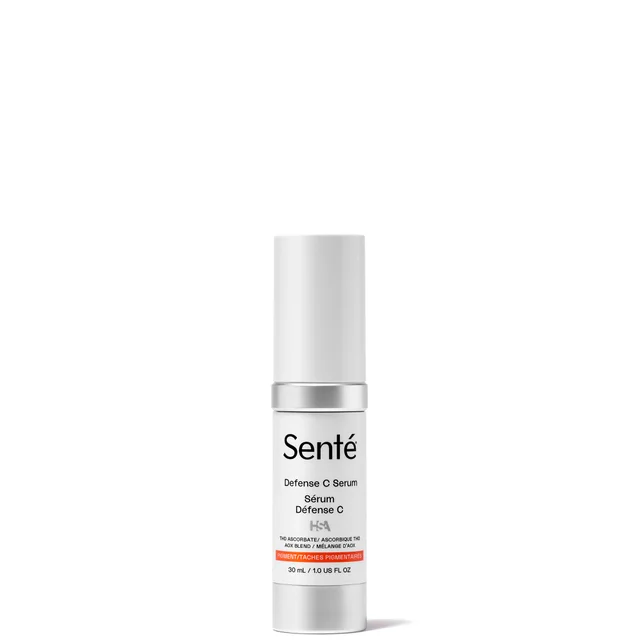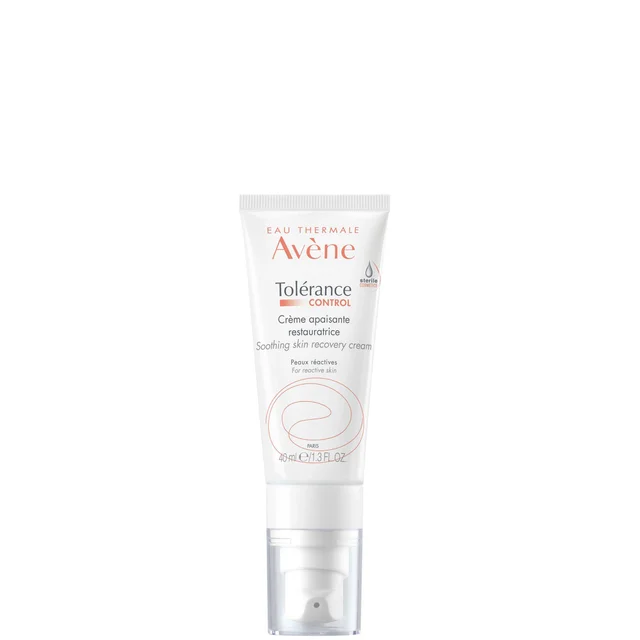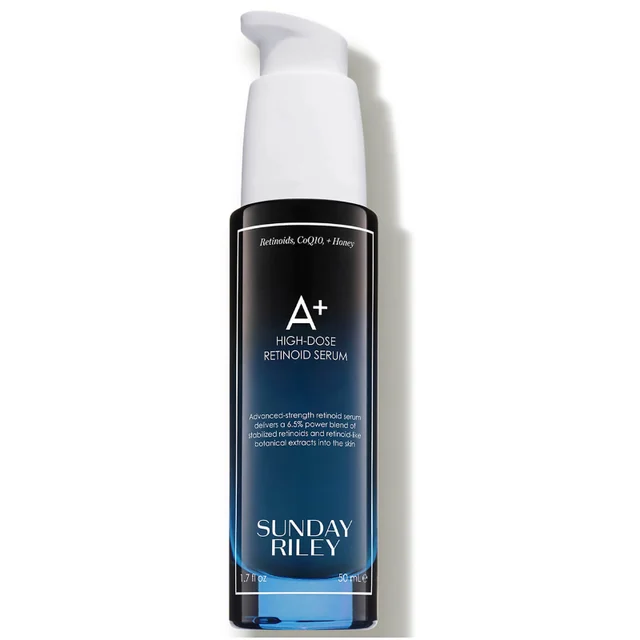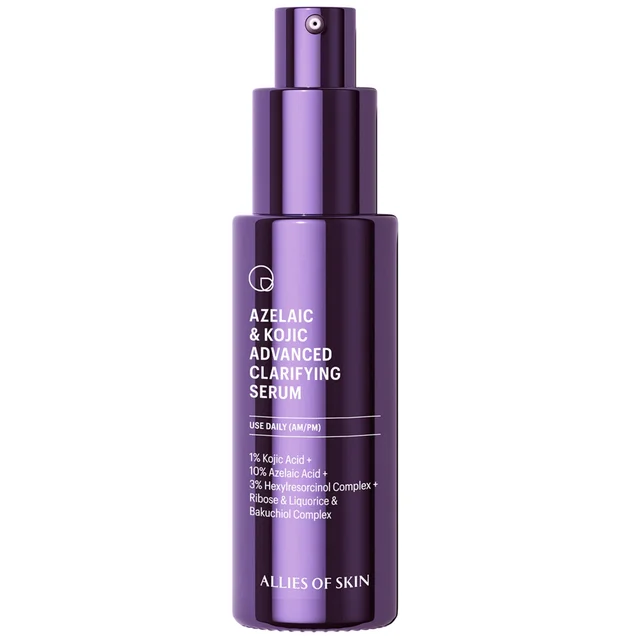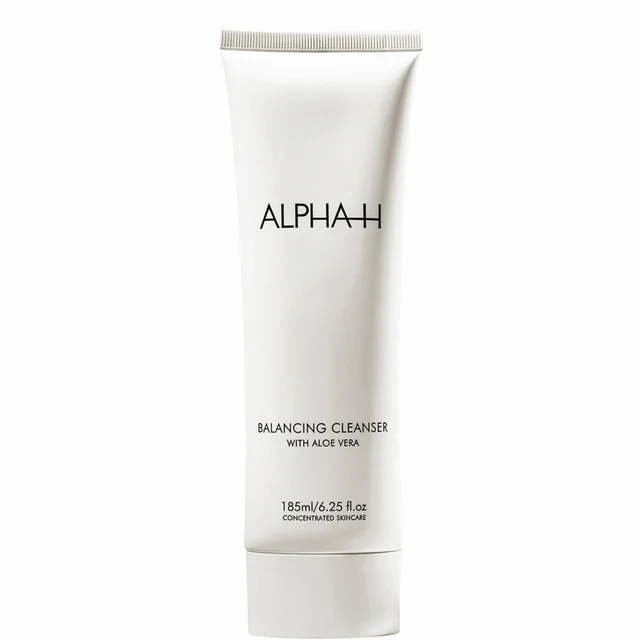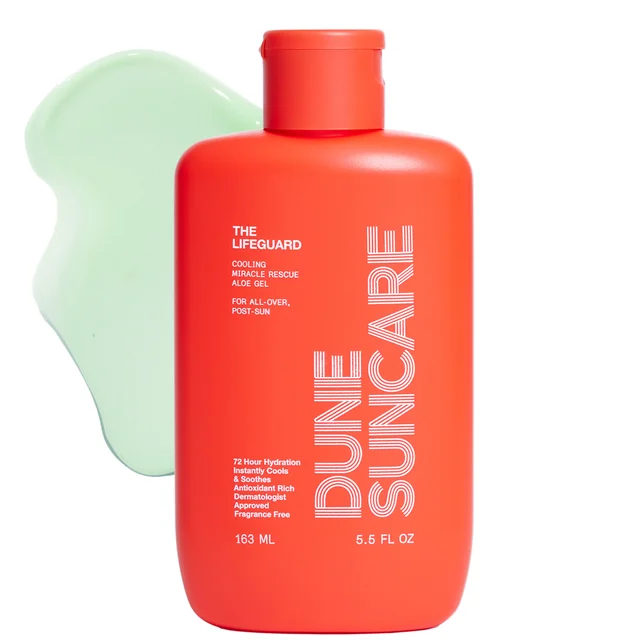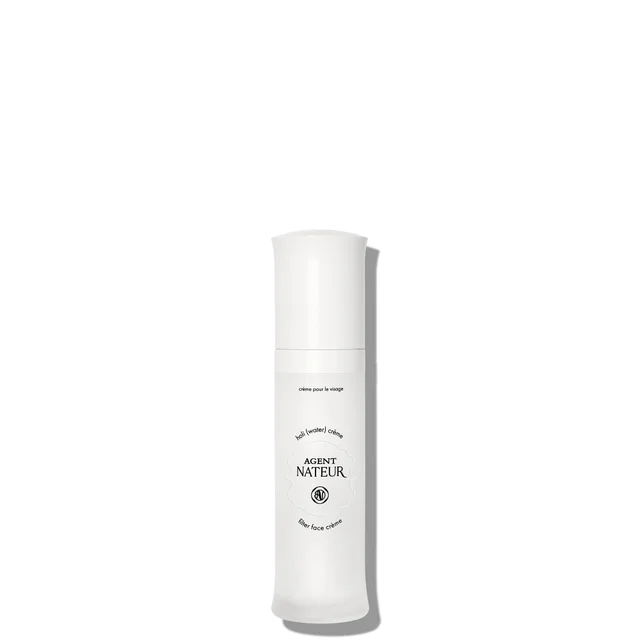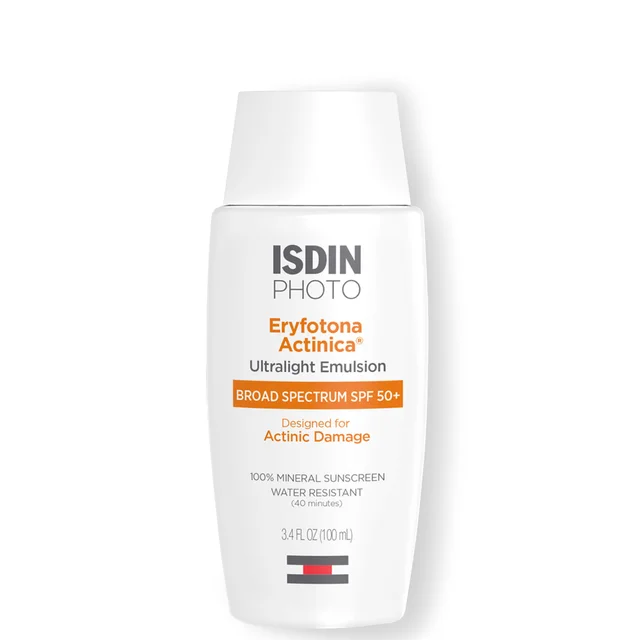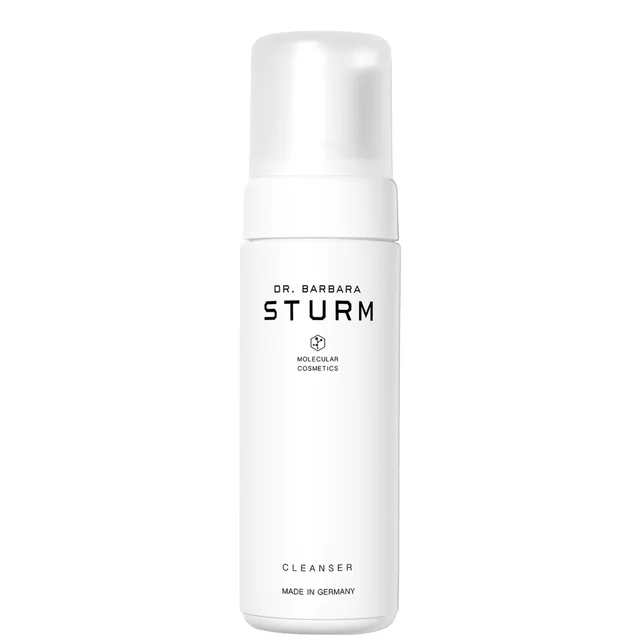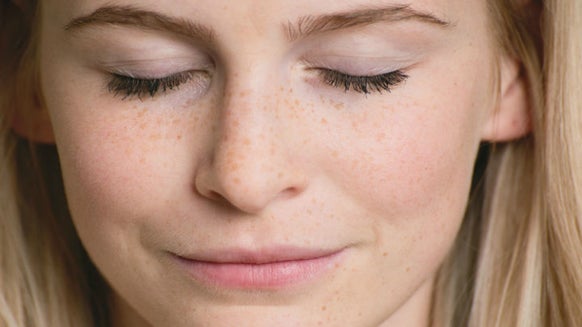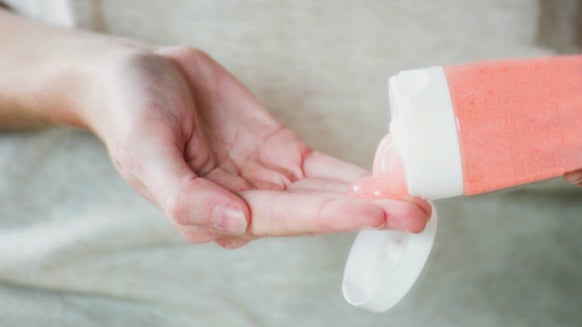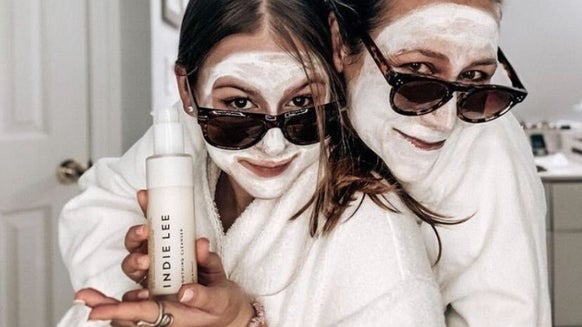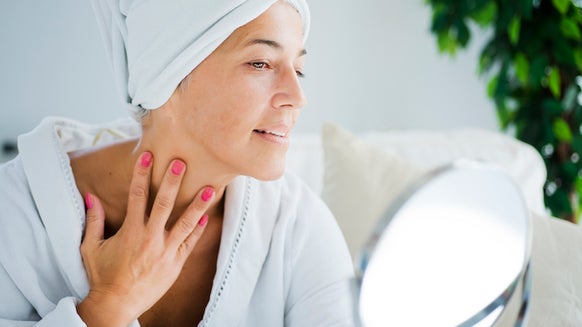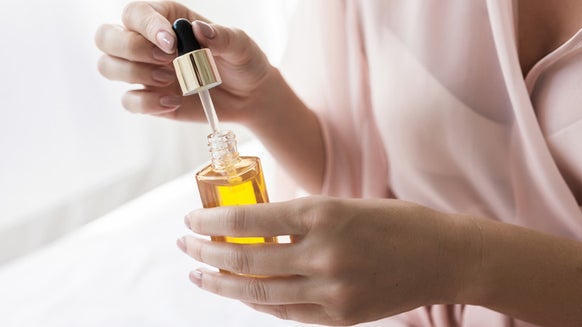9 Derm-Backed Ways to Bring Sun-Damaged Skin Back to Life
Spending time outdoors is the easiest way to recharge the mind and body. And besides, who doesn’t love that post-sun glow? But here’s the thing: constant exposure to the sun can leave behind more than just tan lines. Ultraviolet (UV) rays are the number one culprit behind sun-damaged skin, creating lasting changes in the skin and accelerating signs of aging. And we’re not just talking about sunburn and surface-level pigmentation, says board-certified dermatologist Ashley Magovern, member of Dermstore’s Medical Advisory Board. “The sun’s UV rays can damage DNA in skin cells, increase the risk of skin cancer, break down collagen and elastin (which leads to wrinkles and skin laxity), and trigger pigment overproduction that can cause dark spots and uneven tone.”
Now, for the good news: while you can’t erase signs of UV damage overnight, you can definitely repair, reverse, and—most importantly—protect your skin from the sun’s harmful effects with the right products and ingredients. How? Keep reading as we break down what causes sun damage, how to spot it, and expert-backed ways that will put your skin on the road to recovery.
Meet the Expert
- Dr. Ashley Magovern - Board-certified Dermatologist and member of Dermstore’s Medical Advisory Board
What is Sun Damage?
Also known as photoaging, sun damage occurs when the sun’s harmful rays hit and penetrate the skin, disrupting its normal functions. The sun emits UVA and UVB radiations, which can affect the skin differently. UVA rays have longer wavelengths that go deeper into the skin and break down collagen and elastin, leading to premature skin aging. On the other hand, UVB rays have shorter wavelengths and cause sunburn, damage to the skin cell DNA, and can increase the risk of cancer.
That said, the effects of prolonged UV exposure don’t happen instantly. They often build gradually and don’t become noticeable until months or years later. You may start noticing dry and rough patches, a cluster of dark spots, and wrinkles that seem to have sprouted out of nowhere. And while it’s not necessarily too late to address these concerns by the time you notice them, knowing the tell-tale signs of sun-damaged skin early on can make it easier to heal and repair your skin.
Signs of Sun-Damaged Skin
When skin constantly takes a beating from the sun, it accelerates skin aging and can lead to precancerous changes over time, says Dr. Magovern. Photoaging or sun damage is distinct from natural aging and most often affects areas that see regular sun, such as the face, neck, chest, and hands. “Sun damage can appear as fine lines, wrinkles, rough or leathery texture, dullness, dark spots, broken capillaries, and loss of firmness,” she explains.
Skincare Ingredients to Repair Sun Damage
Vitamin C: A super antioxidant, vitamin C helps neutralize free radicals, stimulates collagen, and brightens and fades dark spots. Retinoids (retinol, retinal, tretinoin): These anti-aging MVPs are “one of the most effective options” because they increase cell turnover and collagen production, soften fine lines, and refine texture. Niacinamide: According to Dr. Magovern, niacinamide is a multitasking ingredient that helps calm inflammation, strengthens the skin barrier, and improves skin tone. Peptides and Growth Factors: Known for their reparative properties, peptides and growth factors support healing and renewal in compromised skin while improving its overall resilience. Azelaic Acid: A gentle exfoliant, azelaic acid reduces pigmentation and redness simultaneously. Kojic Acid: This brightening ingredient inhibits the production of excess melanin and targets stubborn dark spots. Hyaluronic Acid and Glycerin: The dynamic duo of hydration, these humectants flood sun-damaged skin with much-needed moisture to counter UV-related dryness and dehydration. Aloe Vera and Antioxidants: Aloe vera and antioxidants are a must when it comes to soothing sunburnt, irritated skin and preventing oxidative stress. Zinc Oxide and Titanium Dioxide: These mineral filters provide broad-spectrum protection and aid in skin-healing without irritating and overwhelming even the most sensitive skin.
Dermatologist Ways to Treat Sun-Damaged Skin
1. Apply Vitamin C Daily
Vitamin C is one of the most studied antioxidants for preventing and addressing UV-related changes. Regular use helps fade pigmentation, supports collagen, and shields skin from environmental stress. It’s a cornerstone of any morning routine for repairing and protecting sun-exposed skin.
Featured Product: SENTÉ Defense C Serum
Powered by 20 percent THD Ascorbate—a super potent, more stable, and better-tolerated form of vitamin C—this high-potency vitamin C serum is ideal for addressing discoloration, restoring its natural glow, and preventing early signs of aging by protecting your skin from daily sun exposure.
Key Ingredients: Vitamin C (THD Ascorbate), Heparan Sulfate Analog (HAS), Antioxidant Brightening Blend (AOX)
Skin Type: All skin types
Skin Benefit(s): Brightens dull-looking skin, noticeably improves tone and texture, supports collagen repair, protects against environment and oxidative stress, gentle on sensitive skin
Beauty Insider Tip: Apply each morning to work hand in hand with your SPF and boost your skin’s defenses against sun damage
2. Strengthen the Skin Barrier
A weakened barrier leaves your skin more vulnerable to redness and irritation. To keep it in fighting form, look for calming, lipid-replenishing moisturizers that can reduce sensitivity while helping the skin recover from daily environmental stress. By reinforcing the barrier, you create a foundation that allows actives to work more effectively.
Featured Product: Avène Tolerance Control Soothing Skin Recovery Cream for Sensitive Skin
Not only does this recovery cream feature the brand’s signature thermal spring water, it’s also infused with advanced postbiotics to restore and strengthen the skin barrier. It’s the ultimate comfort for sensitive skin that has been compromised by UV exposure.
Key Ingredients: D-Sensinose™, Thermal Spring Water
Skin Type: Sensitive or Reactive
Skin Benefit(s): Soothes irritation, redness, and over-heated skin; calms skin discomfort in 30 seconds; hydrates and restores the skin barrier; relieves tightness
Beauty Insider Tip: Quick-acting and instantly calming, keep this cream always within reach for on-the-go recovery after long days outdoors.
3. Introduce a Retinoid at Night
Retinoids remain the gold standard for photoaging. They hasten cell turnover and stimulate the production of collagen, helping reduce dark spots, refine texture, and smooth lines caused by UV stress. Consistency is key as retinol requires time and patience to reverse sun damage and improve your skin’s overall quality.
Featured Product: Sunday Riley A+ High-Dose Retinoid Serum
This advanced-strength serum packs a high dose of retinoids—a 6.5 percent solution that combines retinoid esters, encapsulated retinol, and blue-green algae with retinoid-like properties—to refine texture and soften the look of sun-induced lines, but it’s balanced with botanicals to keep irritation in check. It works overnight to promote renewal, leaving skin smoother and more even with continued
Key Ingredients: Retinoid Ester Blend, CoenzymeQ10, Hawaiian White Honey
Skin Type: All skin types
Skin Benefit(s): Improves tone and texture, brightens dark spots and blemishes, smooths wrinkles and fights other signs of skin aging, supports cell renewal
Beauty Insider Tip: Ease in slowly to avoid irritating your skin. Start with two or three nights a week, then step it up once your tolerance adjusts
4. Incorporate Azelaic and Kojic Acid
Both azelaic and kojic acids work well on discoloration while soothing irritation, making them ideal for skin dealing with uneven tone and sensitivity. Together, they provide a multi-pronged approach to pigmentation by calming inflammation and reducing melanin production.
Featured Product: Allies of Skin Azelaic and Kojic Advanced Clarifying Serum
Designed to target the six most stubborn skin concerns, this serum is ideal for complexions struggling with dark spots and blemishes, uneven tone and texture, enlarged pores, blackheads and acne, redness, and excess oil. Its multi-action formula blends azelaic and kojic acid with hexylresorcinol for a triple-action effect that brightens discoloration, calms redness, and restores clarity in sun-damaged skin.
Key Ingredients: 10% Azelaic Acid, 1% Kojic Acid, 3% Hexylresorcinol Complex, Ribose, Liquorice, Bakuchiol Complex
Skin Type: Oily, Normal, Combination, Acne-Prone
Skin Benefit(s): Exfoliates gently to improve skin clarity, removes blackheads and decongests pores, refines and smooths skin tone, brightens discoloration and reduces redness, fades blemishes and dark spots
Beauty Insider Tip: Make this serum part of your AM or PM routine by misting one to three pumps to the face and neck. In the morning, always apply SPF to prevent the sun from undoing your progress.
5. Refresh With a Gentle Cleanser
Sun-exposed skin is already stressed from UV rays, so the last thing it needs is a harsh wash. Stick with a cleansing routine morning and night using a gentle, hydrating cleanser that can sweep away impurities, sweat, and SPF and makeup residue while maintaining balance, keeping your skin barrier intact, and prepping the skin for serums and treatments.
Featured Product: Alpha-H Balancing Cleanser with Aloe Vera
This creamy cleanser removes clingy makeup and the day’s impurities without stripping essential moisture, thanks to aloe vera and vitamin E. Its 3-in-1 action is especially beneficial for sun-stressed skin, offering a soothing cleanse while toning and balancing pH to improve skin health.
Key Ingredients: Aloe Vera, Vitamin E
Skin Type: All skin types
Skin Benefit(s):Gently removes all traces of makeup, reinforces the skin barrier, protects against environmental stress, hydrates and leaves skin softer and more plump
Beauty Insider Tip: Give it the full 60-second massage treatment to maximize its soothing and cleansing effects.
6. Calm With Aloe Vera
After sun exposure, there’s nothing the skin wants more than soothing relief. Aloe vera delivers cooling hydration to overheated skin while helping restore balance and minimize redness. A tried-and-tested skin-comforting ingredient, it’s a simple yet powerful way to relieve sun-ravaged skin and prevent further irritation.
Featured Product: Dune Suncare The Life Guard – Cooling Miracle Rescue Aloe Gel
Infused with soothing aloe vera and hydrating glycerin, this gel is a true hero for the skin after too much sun. It instantly refreshes UV-exposed skin and replenishes lost hydration, soothes redness and irritation, and helps your complexion bounce back from environmental stress.
Key Ingredients: Aloe Vera, Glycerin, Antioxidants
Skin Type: All skin types
Skin Benefit(s):Delivers 72 hours of intense hydration, instantly cools and relieves skin, soothes without clogging pores, helps to maintain post-sun glow
Beauty Insider Tip: Keep it in the fridge to double down on its cooling, soothing effect.
7. Replenish With a Lightweight Moisturizer
Hydration is essential for barrier repair and elasticity, so a lightweight yet nutrient-rich moisturizer is a must. Choose a formula that supports healing and gives skin the resilience to recover from UV stress without overwhelming it with pore-clogging ingredients. Hydrating moisturizer ingredients can also help plump up the skin, making fine lines and wrinkles less noticeable.
Featured Product: AGENT NATEUR holi (water) crème
This luxurious cream delivers serious hydration without heaviness, making it perfect for daily barrier support. Powered by vitamin C, super antioxidants, and healing botanicals, it not only nourishes skin and helps it build resistance against UV exposure, it also helps fade dark spots, improve skin tone, and protect against external stress.
Key Ingredients: Tetrahexyldecyl Ascorbate (Vitamin C), Manuka Honey, Aloe, Cucumber Distillate, Rose Water, Lavender Water, Rock Rose Extract, Dragon Fruit Extract
Skin Type: All skin types
Skin Benefit(s):Brightens and fades dark spots and blemishes, firms skin and improves elasticity, intensely hydrates and soothes inflammation, quenches free radicals and protects against environmental stress
Beauty Insider Tip: Layer it under SPF in the morning and over serums at night for round-the-clock hydration support.
8. Protect With a Mineral Sunscreen
No sun-damaged skin routine is complete without sunscreen, especially if you don’t want your ongoing skin repair efforts to get undone. Dermatologists recommend mineral SPF options with zinc oxide and titanium dioxide since they provide broad-spectrum coverage without irritating sensitive or compromised skin. Make sure to apply and reapply whenever you step outside to ensure your skin repair efforts aren’t undone by new UV exposure.
Featured Product: ISDIN Eryfotona Actinica Mineral Broad-Spectrum Face Sunscreen SPF 50+
More than just sunscreen, this ultra-lightweight formula combines mineral protection with DNA Repairsomes® that help correct past damage. It wears sheer and non-greasy, making it easy and comfortable to use daily.
Key Ingredients: Zinc Oxide 11%, DNA Repairsomes®, Vitamin E
Skin Type: All skin types
Skin Benefit(s):Provides broad-spectrum, all-mineral SPF protection, supports DNA repair, prevents and reverses UV-induced damage, fast-absorbing and non-comedogenic, sheer finish, provides antioxidant protection
Beauty Insider Tip: Make sure to reapply every two hours for optimal protection throughout the day.
9. Consider an Antioxidant-Rich Cleanser
Ultraviolet radiation is one of the top contributors to free radical damage, so incorporating more antioxidants in your routine is the best way to arm your skin. Antioxidant cleansers protect while they purify, removing daily buildup and free radicals that contribute to oxidative stress. They’re an easy way to reinforce defenses against environmental damage right from the first step.
Featured Product: Dr. Barbara Sturm Cleanser
This foaming cleanser elevates the basic cleanse by infusing antioxidants alongside soothing aloe vera. It gently removes buildup while reinforcing the skin’s defenses, leaving your complexion refreshed, resilient, and ready for treatments.
Key Ingredients: Aloe Vera, Purslane, Glycerin, Panthenol
Skin Type: All skin types
Skin Benefit(s):Removes makeup and impurities, preps skin for treatments, preserves pH balance and barrier function, hydrates and soothes post-sun skin
Beauty Insider Tip: Use this foaming wash as your nighttime cleanser to sweep away the day set your skin up for active treatments.
FAQs
Should you exfoliate if you have sun-damaged skin?
Yes, but proceed carefully. “Gentle chemical exfoliants like lactic acid or glycolic acid are ideal to remove damaged surface cells and enhance the penetration of your skincare products,” explains Dr. Magovern. On the other hand, it’s best to avoid harsh scrubs altogether. “[These] can worsen irritation and cause breakouts and barrier damage,” she adds.
Does vitamin C repair sun damage?
Vitamin C doesn’t undo damage at the DNA level, but it does improve visible changes like pigmentation and dullness. It also strengthens the skin’s defenses against further UV stress when paired with sunscreen.
Can you reverse sun damage?
You can’t erase sun damage entirely, but you can significantly improve tone, texture, and radiance with consistent skincare. If you want faster and more pronounced results, you can opt for dermatologist treatments on top of a strong daily routine. “Dermatologists often recommend prescription-strength retinoids, in-office treatments like chemical peels, fractional lasers, and intense pulsed light (IPL) to resurface and brighten the skin, and regular full-skin exams to catch precancerous lesions early,” explains Dr. Magovern.
The Bottom Line
While you can’t turn back the clock and undo the effects of UV exposure in a snap, you can commit to a well-rounded routine that leaves sun-damaged skin looking brighter, smoother, and stronger over time. It takes patience, commitment, and consistency, but the right products and ingredients make the process easier.
Focus on proven actives that counter the visible effects of sun exposure while protecting your skin from future damage. These include vitamin C, retinoids, aloe vera, niacinamide, and hyaluronic acid, with each ingredient playing a role in restoring balance, boosting your skin’s resilience, and improving clarity and overall health. Another must-do? Switching to a gentle cleanser, a lightweight moisturizer, and a mineral SPF to give skin all the nourishment it needs without overwhelming an already-stressed complexion.

Janeca Racho is a Journalism graduate with over 15 years of writing experience. After getting her start in public relations and advertising, she made the switch to freelance writing and began working for various lifestyle, fashion, and travel brands. Her love for all things skincare has led her to beauty reporting and research for the last ten years. Writing for several hair and beauty blogs, she reports on anti-aging staples, trending brands and products, must-have ingredients, and health and wellness.
